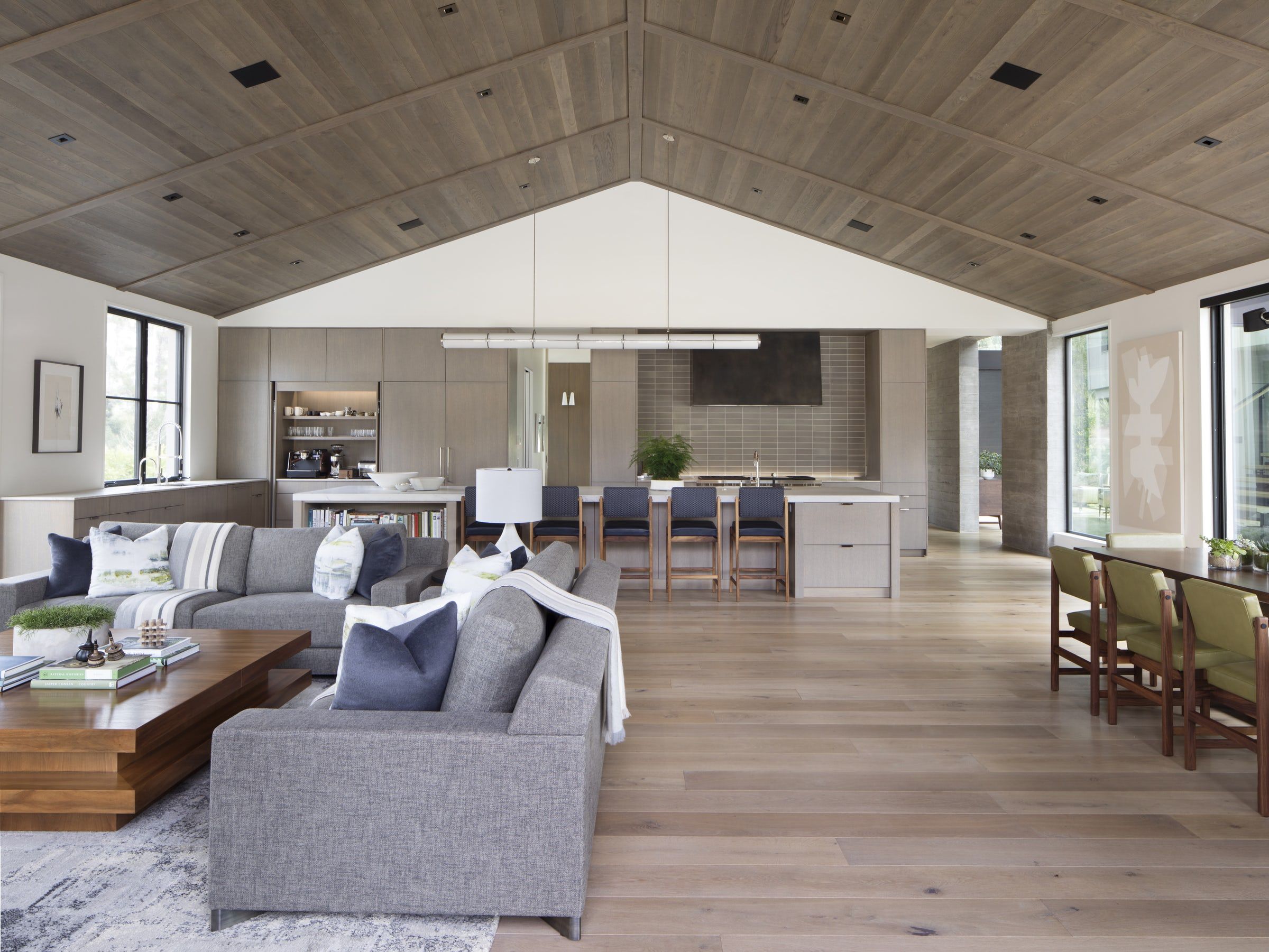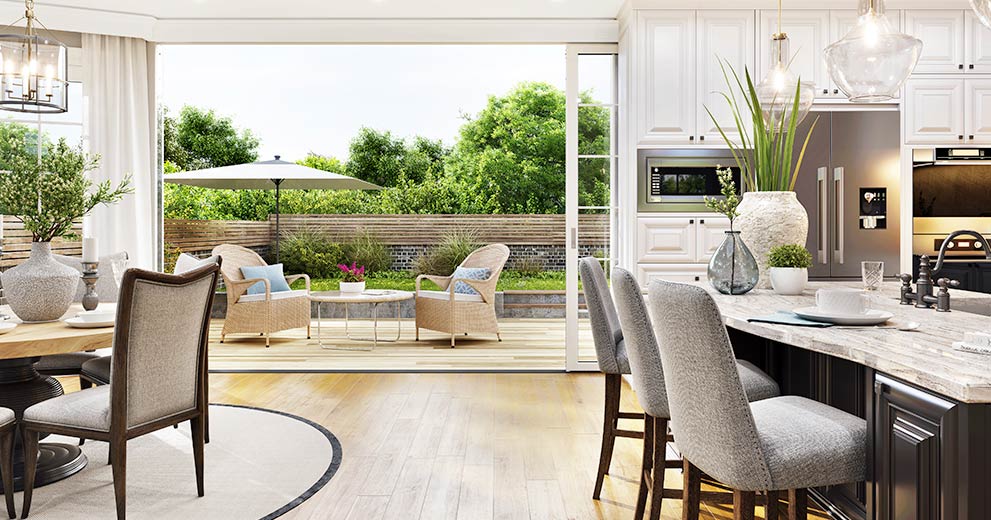Remember that sleek, modern home you saw on HGTV, all one big open space with the kitchen, living room, and dining room flowing seamlessly into each other? That once-coveted open floor plan has been a staple of modern architecture for decades, but a growing number of homeowners are starting to rethink that airy, open concept. The rise of remote work, the desire for privacy, and the changing needs of families are all contributing to a shift in how we think about home design.

Image: ar.inspiredpencil.com
So, are open floor plans truly going out of style? While the answer isn’t a simple yes or no, there’s definitely a growing trend towards more defined spaces and a reappreciation for rooms with walls. Today, we’ll explore the reasons behind this shift, examine the pros and cons of both open and closed floor plans, and discover whether this architectural evolution represents a permanent departure from the open-concept ideal or a mere adjustment in response to changing times.
The Allure of Openness: A Look Back
Let’s rewind the clock to the 1990s, a time when the open floor plan boomed in popularity. Architecturally, it offered a fresh, modern approach that embraced light and space. It was a reaction against the more compartmentalized layouts of traditional homes, emphasizing openness and the sense of a flowing, cohesive living environment. This aesthetic resonated with a generation seeking a less formal, more inviting atmosphere for entertaining and family life.
The rise of the open floor plan was also driven by a changing definition of “home.” As families started to prioritize communal spaces over individual rooms, the open floor plan seemed like the perfect solution. It created a sense of unity, encouraging families to gather, cook together, and interact while pursuing their own hobbies.
The Rise of the “Multifunctional Space”: The open floor plan also fit perfectly with the rise of the multifunctional space, where one room serves multiple purposes. With flexible furniture and clever storage solutions, the open floor plan allowed for the adaptability necessary to create a home workspace, a kid’s play area, a dining room, and a cozy living space within the same area.
When “Open” Became Overwhelming: Rethinking the Concept
While the idea of openness and flexibility was appealing, the open floor plan soon faced some unexpected consequences. While it was great for entertaining, the lack of walls and closed-off spaces started to raise issues for privacy, noise levels, and even productivity.
Privacy Concerns: Families struggled to create personal, quiet spaces for reading, concentration, or simply relaxing in peace. Everyone’s every move was on display, making it challenging to get away from the noise and distractions of everyday life.
Noise Overload: In an open space, sound travels freely, making it difficult to hold a conversation, focus on work, or enjoy a peaceful moment of quiet contemplation. This constant noise could lead to stress, overwhelm, and difficulty in achieving a sense of calm.
Remote Work Blues: The rise of remote work presented a major challenge for open floor plans. The lack of defined workspaces led to distractions, difficulty focusing, and a struggle to maintain a clear separation between work and home life.
The “Everything-on-Display” Effect: While a hallmark of open floor plans was the sense of being “connected,” the lack of walls could also feel overwhelming. It meant that even the messiest corner of the home was on full display, adding to the stress of keeping a tidy and organized space.
The Return of the Wall: A New Era of Home Design
Today, as homeowners face a reality of noise, distractions, and the need for more personalized space, the desire for walls is growing. Instead of open-concept living, we’re seeing a return to more traditional floor plans that offer a blend of open spaces for communal activities and private spaces for focused work, quiet contemplation, and even a little bit of escape from the hubbub of daily life.
The “Hybrid” Home: This shift represents a move towards a hybrid model of home design, where open floor plans are combined with closed-off spaces, creating an environment that caters to both social and individual needs.
The “Quiet Room” Concept: The rise of the “quiet room” – a designated area for reading, meditating, or simply enjoying a moment of peaceful solitude – highlights the growing need for personalized spaces. These quiet rooms often serve as a haven away from the noise and distractions of an open floor plan, allowing residents to recharge and unwind.
A Focus on Functionality: This evolution in home design emphasizes functionality over mere aesthetics. There’s a growing recognition that a home should be a sanctuary that adapts to the unique needs of each individual within it.
The “Flexible” Layout: Modern homes are increasingly designed with flexibility in mind. Sliding doors, movable walls, and clever storage solutions allow for the creation of adaptable spaces that can be quickly transformed to suit the needs of the moment.

Image: www.capitolbuilt.com
Beyond the Open Floor Plan: What Lies Ahead?
The shift away from the open floor plan is not a complete rejection of the concept. It’s more like a subtle evolution, an adjustment to embrace the needs of a changing world. In the future, we can expect to see more emphasis placed on creating environments that offer both openness and privacy, functionality and flexibility. The homes of tomorrow will likely be a blend of open spaces and enclosed spaces, designed to cater to the evolving needs and expectations of modern families.
Expert Insights: Lessons from the Professionals
Architects and interior designers are at the forefront of this evolving approach to home design. They are adapting to the changing demands of their clients, incorporating more defined spaces while still maintaining a sense of openness and flow.
-
“It’s about creating a balance,” says renowned architect Sarah Jones. “We need to create spaces that allow for both connection and privacy, activity and quiet contemplation.”
-
Interior designer David Smith emphasizes the importance of “flexible design.” “Homes today need to be adaptable, offering a range of options for how to utilize each space.”
-
“The goal is to create spaces that feel both welcoming and functional,” adds renowned design consultant Emily Davis. “Designing for both social interaction and individual needs is key.”
Creating Your Own Perfect Space: Embracing the New Home Design
Whether you are building a new home or remodeling your existing space, there are many strategies you can use to create a space that meets your unique needs and reflects your personal style. Here are a few key takeaways:
-
Plan for Privacy: Think about dedicated spaces for quiet activities, such as reading, working, or simply relaxing. Consider building in a “quiet room,” or incorporate strategic room dividers to create zones of privacy within an open space.
-
Embrace Flexibility: Include elements like sliding doors, furniture with multiple uses, and wall-mounted shelves that can be rearranged with ease to create spaces suited for different activities.
-
Prioritize Functionality: Design your home with the intention of maximizing its use. Make sure you have enough storage space to keep things organized. Ensure ample seating in communal areas and dedicated workspaces for those who work from home.
-
Consult a Professional: Don’t hesitate to enlist the help of an architect or interior designer. They can bring expertise and fresh ideas to your project, turning your vision for the ultimate home into reality.
Are Open Floor Plans Going Out Of Style
Moving Beyond the Open Floor Plan: A Reflection on Home Design
The shift from the open floor plan to more defined spaces marks a fascinating evolution in how we conceptualize home design. It reflects a growing awareness of the importance of balancing social connection with the need for individual space and the growing role technology and remote work are playing in our lives. Ultimately, the best home design is the one that best adapts to our evolving needs, allowing us to live comfortably, creatively, and with a sense of peace. As we move into the future, we can expect to see even more innovative home designs that seamlessly integrate both open and closed spaces, creating the perfect blend of openness and privacy to suit every lifestyle.





